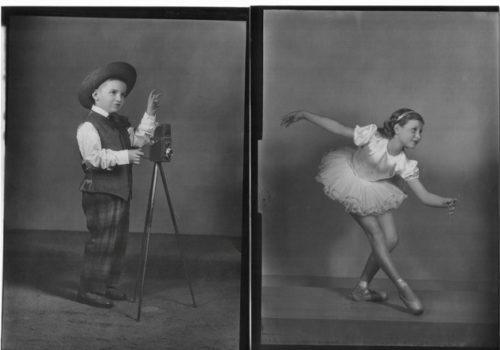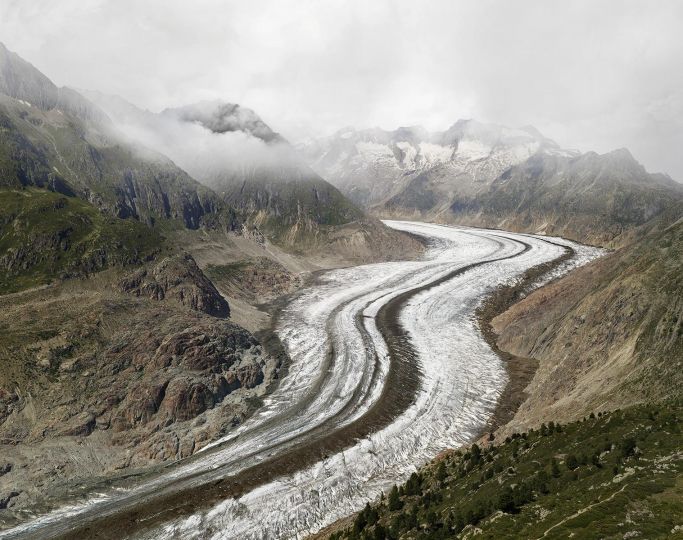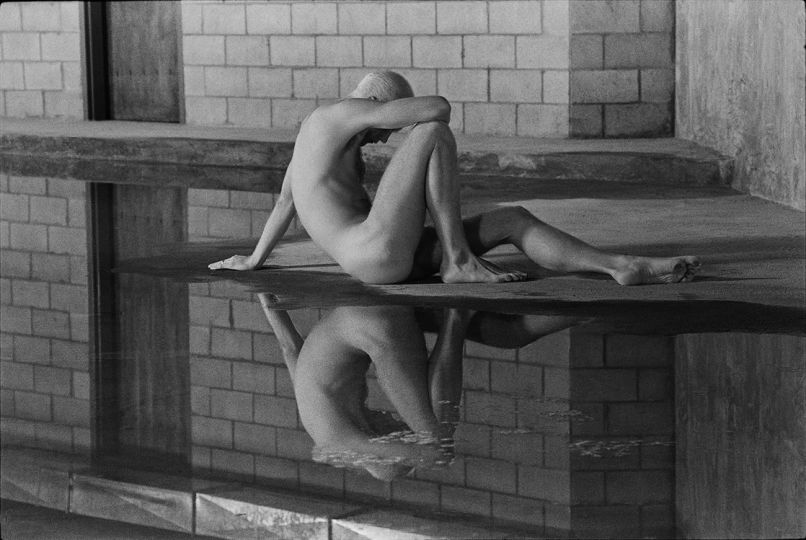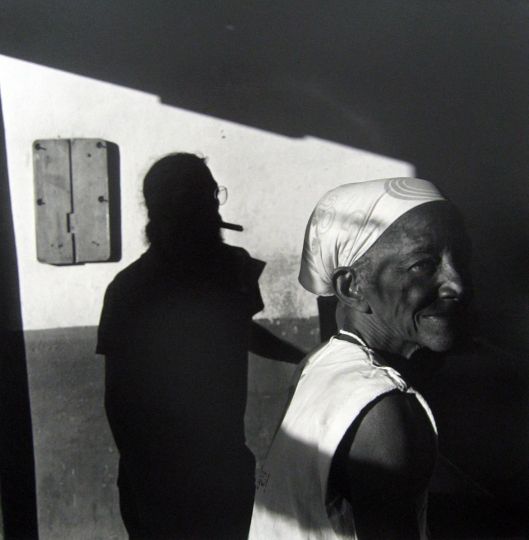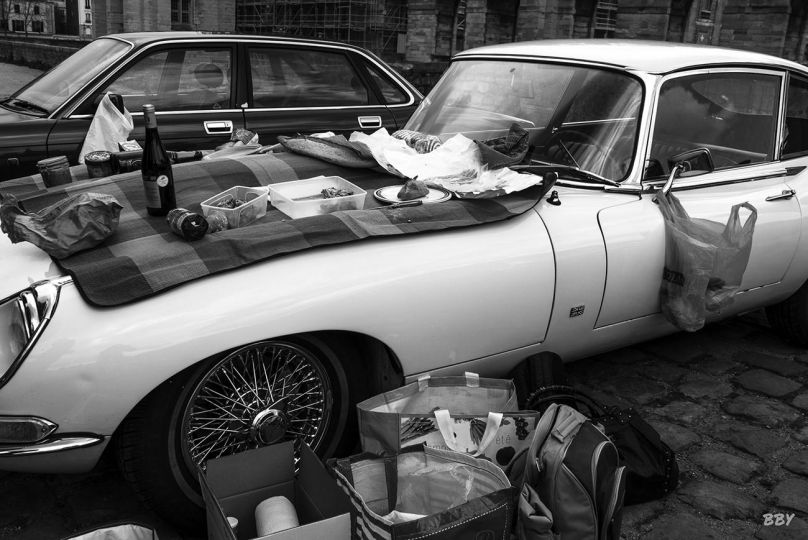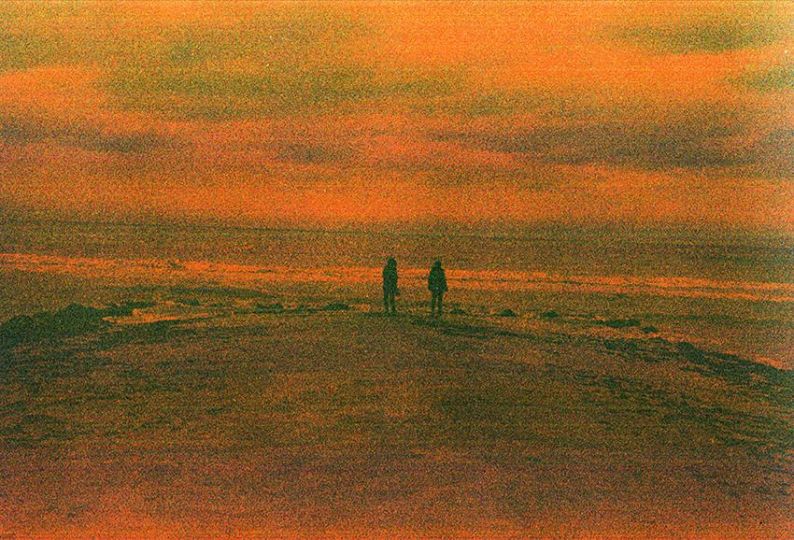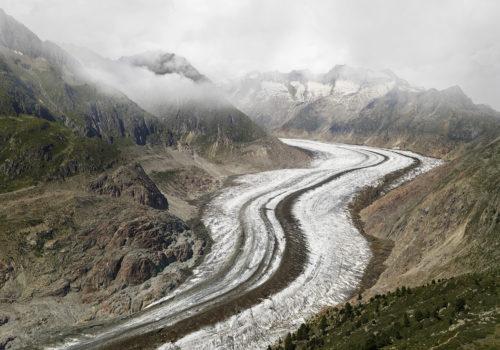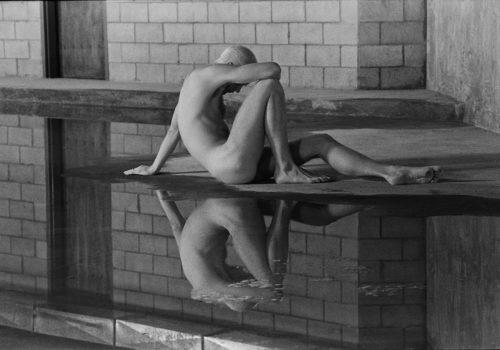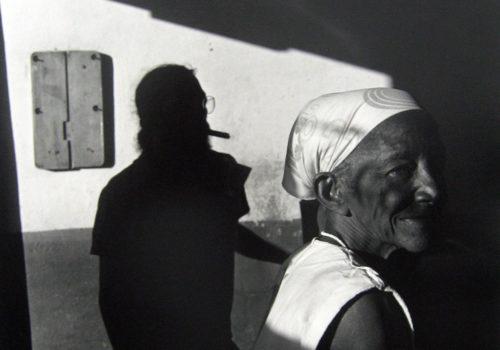Continuing my research, here is first an alternative fixing test carried out on October 14.
I told myself that one day I would try to look for a complete alternative film and ecological photographic chain. I think that on the evening of October 14, 2024, the mission I had set for myself was partly accomplished somewhat.
First try.
“Contact” prints of two 13×18 film plans taken by my father in his studio in Roanne in 1953. (photos 1 and 4)
I carried out these tests of fixing the prints on Ilfospeed paper and on baryta paper; the prints were developed in an alternative developer made with an aromatic sage herb, to which I took care to add a few cloves, also very rich in polyphenols.
This alternative developer to sage was used at 27 degrees, the development was then stopped in a stopping bath made with white vinegar at 14°, finally the fixing operation was therefore carried out in an alternative fixative made with a kilo of yellow onions from the Cévennes, (alliaceous) of which one of the components is thiosulphate!. I was able to extract 900 cc of liquid juice to which I added 100 cc of water. (photo 5)
But I’m still only half satisfied with my research; in fact, the prints obtained darkened after 24 hours, they took on a brownish, slightly purplish color (photo 2). A sort of natural shift.
After this first test, I therefore had to deduce that there still remained, in this type of fixative, silver halides which had not been fully developed and that the fixing was not complete. This “onion juice” fixative should have, in my opinion, made the excess silver bromide soluble, so that the silver emulsion layer was no longer photosensitive. I concluded that the content of sodium thiosulfate, an essential substance for fixing, contained in this onion juice, was therefore not sufficient. After a few hours the prints actually and unfortunately darkened significantly.
Two weeks later, another try.
I started the tests again and this time I decided to fix my prints in an onion juice obtained in the same way but this time with 1kg 600 of white onions without adding water, to which I added 40 grams of chives. Like onion and garlic, chives are part of the alliaceae family. I pressed the puree mixed with white onions and chives into a cloth to obtain a perfectly liquid juice, then I filtered it. (photos 5 and 6)
The results turned out to be quite interesting because the prints did not darken (photo) as observed during the first test, what’s more, several days later, there is no visible change at the moment. (photos 7, 8, 9, 10,11)
At this stage of my experiments, I also wanted to know if it was possible that one type of white onion was richer than another in thiosulfate content. After having contacted various renowned specialized organizations, linked to the food sector and likely to be able to provide me with information, I unfortunately noted that none of them have to date been able to answer me on the content of this component, fixing agent contained in the onion. Specific research would not be quantified or given from this area. What a pity. Sodium or ammonium thiosulfate is, as all photographers have known for a long time, the substance necessary for fixing a silver emulsion, film or paper…
If this proves possible, research into alternative fixatives should therefore be continued. Preserving my essays on paper is a step to follow over time and, at this stage, I do not claim to transmit for the moment a sufficiently precise method, nor a lasting solution. All of this remains at the experimental stage for the moment.
Continuation of my tests for the use of an alternative developer intended for papers.
In this approach, I wanted to continue my research into alternative developers intended for the development of baryta papers, in particular by already improving the use of a developer made with an aromatic herb: sage (see my tests previously published by The Eye of Photography.
https://loeildelaphotographie.com/en/the-silver-eye-jacques-revon-prints-on-gelatin-bromide-paper-in-alternative-developers-made-with-coffee-wine-and-sage/
and
https://loeildelaphotographie.com/en/the-silver-eye-jacques-revon-the-alternative-ecological-developer-made-with-an-aromatic-garden-herb-sage/
Indeed, compared to the development of films, it is recommended for the development of a paper, to increase the quantity of dried sage during the decoction, 30 to 35 grams for two liters of water and in this case, to develop in a bowl at high temperatures, which is not usual: between 30° and 33° with a water bath at these temperatures, also adding directly into the development bowl, 2.5 grams of vitamin C when starting to develop a small series of prints.
On this subject I must make a correction: from the start of my tests, I weighed an effervescent tablet of vitamin C, it was 2 grams but in reality, due to the excipients present, the active principle was not, it was only 500 milligrams. This should therefore be taken into account in my previous publications.
In these different experiments, it should be noted that all my tests are carried out by contact with 13×18 film sheets, using a small contact printer equipped with a small opaline bulb of 7.5 watts to avoid inside, a concentration of heat. (photo 3)
The exposure time of the paper required is also quite long, between 4 and 6 minutes, and the development time in the tank is between 6 and 7 minutes but without background veil.
To also test the resistance to oxidation of this sage developer, I kept it for 6 days, then I again developed prints, this time adding 500 mg of vitamin C (orange-flavored effervescent hence the red-orange tone of the prints) in order to reactivate the development and thus compensate for the conservation time. In this test, the fixative product that I used is, however, classic: Hypam fixative at the dosage recommended by its manufacturer, 1+9. (photos 12, 13, 14, 15, 16, 17)
To be continued…
Jacques Revon
Honorary journalist, author, photographer.
https://fr.wikipedia.org/wiki/Jacques_Revon

